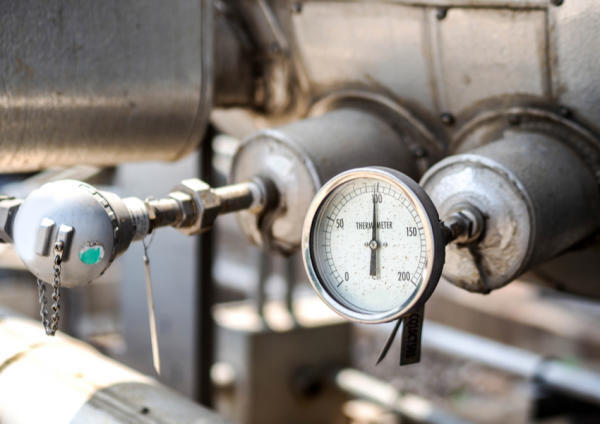Toll Free: (800) 888-8987 | Phone: (440) 835-3540 | office@ramsensors.com
What Causes Temperature Sensors to Fail?
Industrial temperature sensors, whether platinum temperature sensors, thermocouples, thermistors, or others, can be vulnerable to failure occasionally. Treating the temperature sensors properly goes a long way in maintaining their accuracy, but other factors can come into play too.
Since getting accurate readouts from temperature sensors is of critical importance, it’s worthwhile to be prepared. This article will explore issues that could cause temperature sensors to fail, ways to recognize the signs of failing temperature sensors, and strategies to ensure that your temperature sensors work properly.
Reasons Why a Temperature Sensor May Fail
There are a variety of reasons why a temperature sensor may fail. Depending on the cause of the failure, the temperature sensor may or may not still be fixable.
Chemical Contamination
Chemical contamination changes the purity of the platinum in the sensor wires, causing permanent damage. Similarly, broken lead wires (which can occur over time even with proper care) are oftentimes not fixable.
Damaged Transition Junction
A damaged transition junction will almost certainly lead to a failing temperature sensor. This area where the sensor lead wires and cable lead wires join together (by soldering or spot welding) can be affected by moisture. Once moisture accumulates in the transition junction, the temperature sensor’s ability to produce accurate measurements will be compromised. Signs of this problem include visible moisture accumulation and cracked epoxy.
Self-Heating
Self-heating, a common issue with thermistors and PRTs, can occur when setting current levels manually. It is important to check the specs or calibration report so you do not cause permanent damage by allowing too much or too little current to flow through the sensor.
Other Causes
Other causes for sensor failure include bending the sensor sheath, hysteresis (which occurs when a temperature sensor lags or is affected by previous readings), leakage current, strain, or mechanical shock.
How to Recognize the Signs of a Failing Temperature Sensor
The most obvious sign of a failing temperature sensor will be readings that are illogical or widely inconsistent. In that case, there’s a problem with the temperature sensor that needs to be addressed. Sometimes, however, the symptoms of a failing temperature sensor will be more subtle.
For example, a temperature sensor can appear to be working perfectly but fail during calibration. Additionally, visible damage to the temperature sensor can be a sign that the internal workings or connectors are damaged, leading to inaccurate readings.
How to Keep Temperature Sensors Working Properly
One of the simplest ways to protect a temperature sensor from failing is to follow the guidelines from manufacturers. Other ways are to:
- Ensure sensors aren’t exposed to overly harsh environments, including temperatures higher or lower than the range it can handle
- Refrain from putting too much stress on the cable
- Keep the transition junction from being submerged in water or other liquids
- Avoid dropping or bumping the temperature sensor, especially PRTs
- Compare the sensor’s accuracy against a primary standard
By following these tips, it’s possible to maximize the useful life of a temperature sensor and ensure its long-term accuracy.
When in Doubt, Contact a Professional
Temperature sensors can be complicated. For additional information and help, turn to the experts at RAM Sensors, a leader in industrial temperature sensor manufacturing. We can walk you through any issues you’re having with your temperature sensors and find an appropriate solution. Reach out to us by email or through this form.
We also offer calibration certification, including thermocouple calibration, to ensure accuracy and help your organization to prevent sensor failure. Contact us to request certification!





